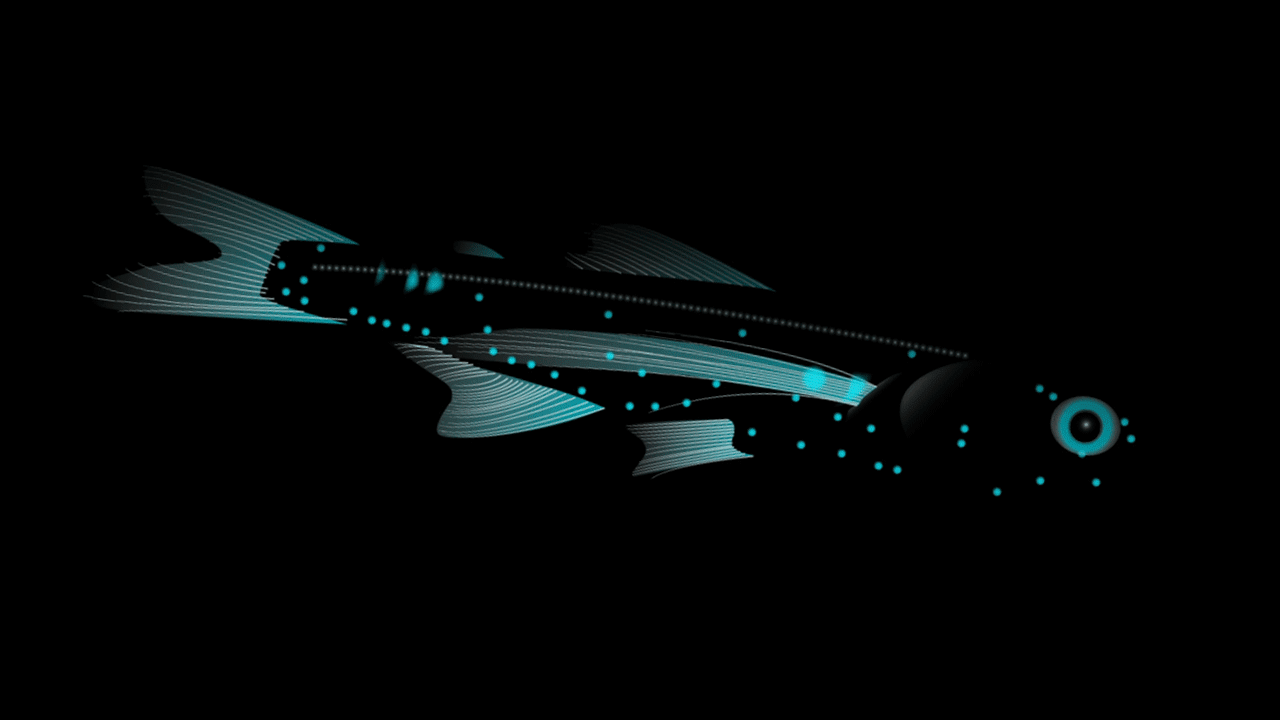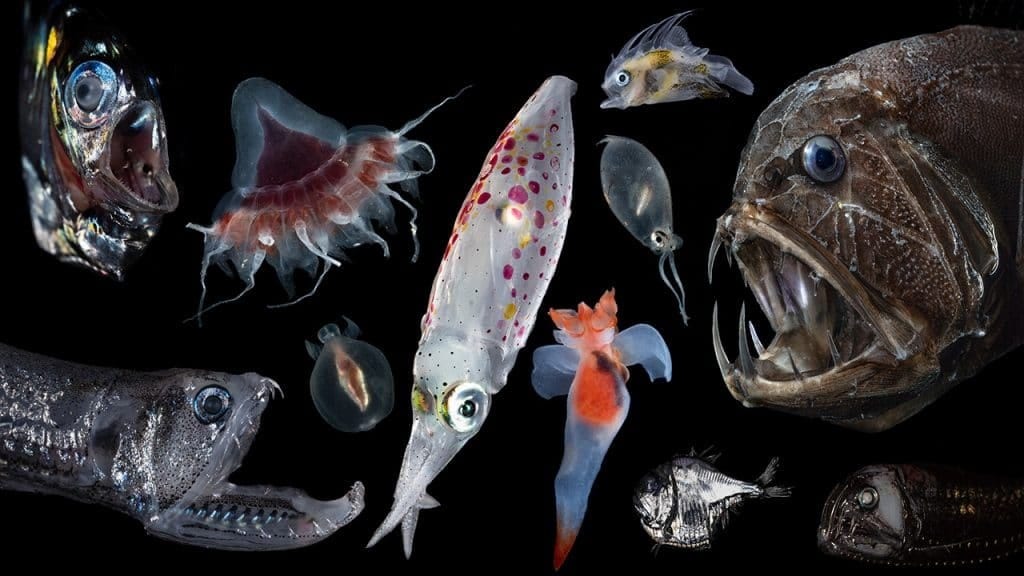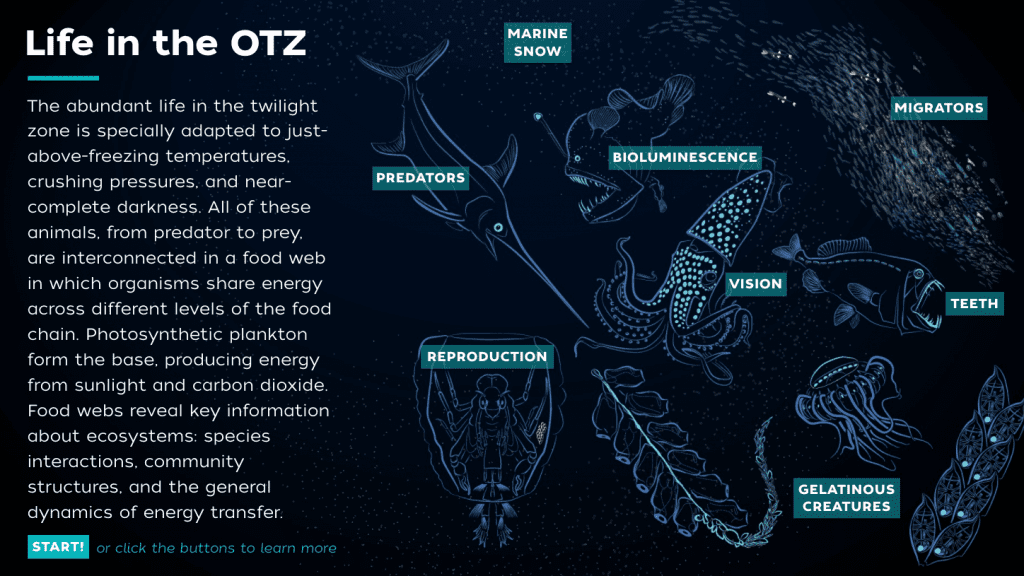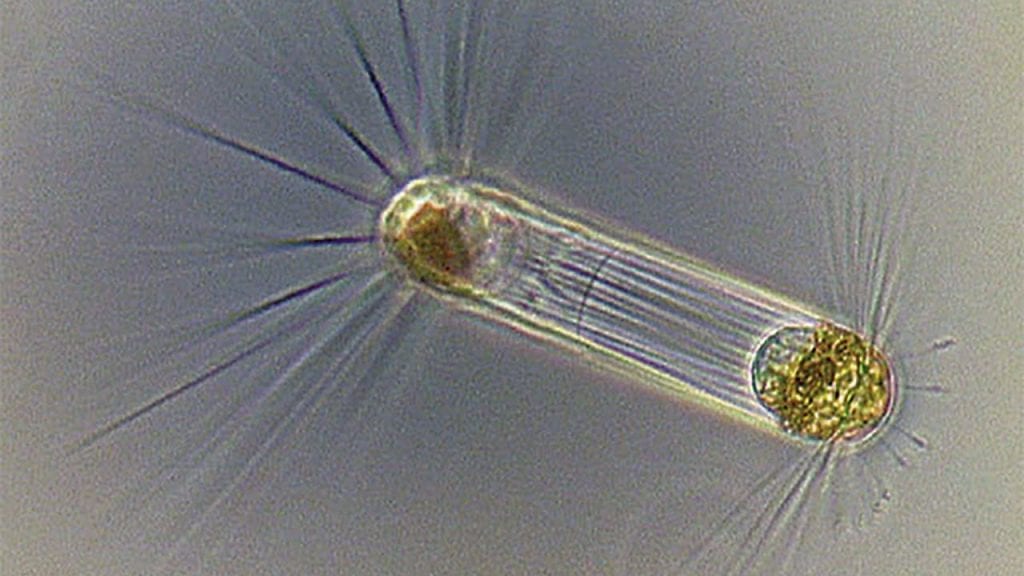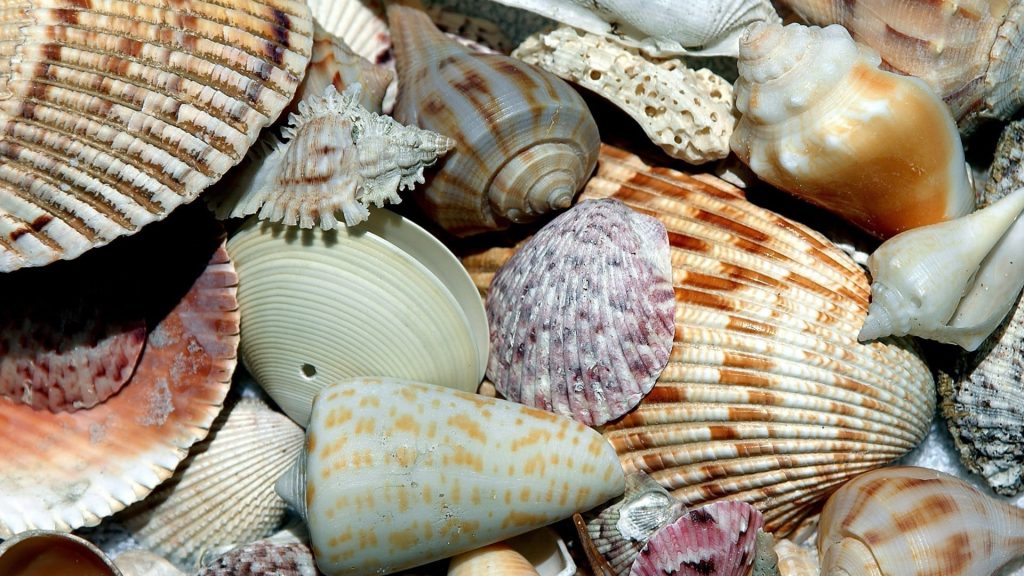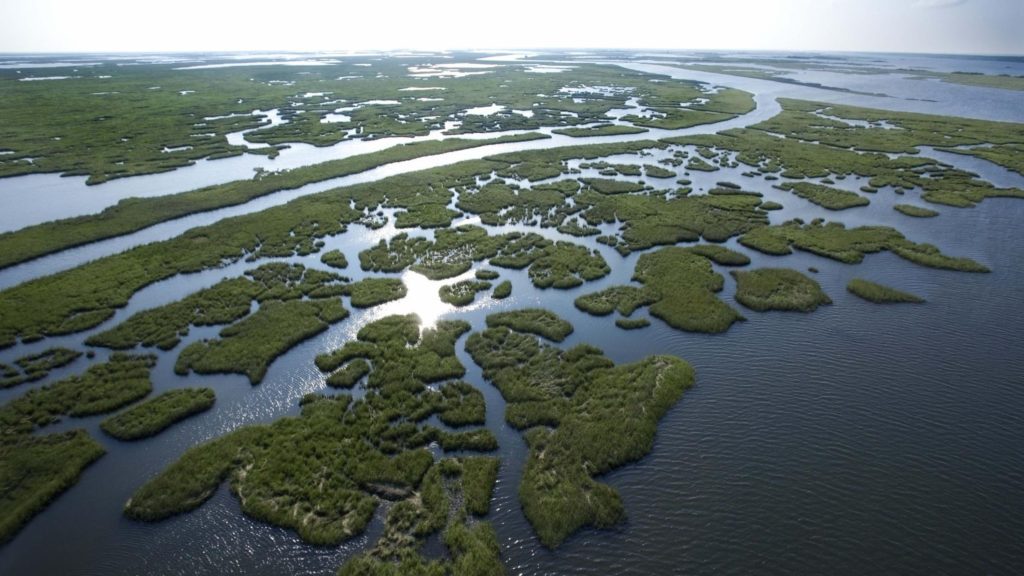Deep in the ocean there’s very little sunlight. But if you could swim down there, it would look a bit like the night sky. That’s because many animals that live in the ocean produce light. This bioluminescence happens in a variety of different types of animals. Many species of fish, squid, and shrimp can bioluminesce, as can jellyfish and their relatives. Marine worms, sea cucumbers, sea stars and many types of phytoplankton also emit light.
Bioluminescence involves a chemical reaction inside the animal’s cells. For some animals, those cells are located in a special light organ called a photophore that can look like a spotlight. Other organisms take on a more general glow.
The reaction involves two molecules: luciferin and luciferase. When they react with oxygen, it produces light. That light can be red, yellow, green, blue, or even violet. But in the ocean, it’s usually blue-green. That’s because these wavelengths of light travel best through water. (This is also the reason why water is blue.) Animals control when they light up by controlling the movement of oxygen into cells containing luciferin and luciferase.
Not all animals make their own luciferin or luciferase. Some get these molecules by eating other bioluminescent organisms. Some animals have a special symbiotic relationship with bioluminescent bacteria. The bacteria live in the host, where they are sheltered and fed by the host animal. In return, they glow when the host needs light.
Organisms use bioluminescence for many different reasons. It can be used to attract prey. For example, anglerfish lurk deep in the midnight zone. These fish have a bioluminescent lure dangling in front of their toothy mouths. Smaller fish and other animals are drawn to the lures, and the anglerfish snatch them up.
Bioluminescence can also be used to avoid predators. Phytoplankton turn the water’s surface a sparkly blue when the water is disturbed by fish swimming through or a boat motoring by. They do this when under threat. Scientists think the glow attracts larger predators that scare off the original ones.
Some fish, such as hatchetfish, glow on their bellies. These fish live in the twilight zone, where little light from above reaches the depths. But the glow helps hide them from predators lurking below, by allowing them to blend in to the lighter water above. Squid living in waters from the sunlit zone to the depths of the midnight zone flash their photophores to scare off predators. Deepwater shrimp in the twilight zone can spew a cloud of glowing mucus into the water to confuse predators. Brittle stars and sea cucumbers on the seafloor of the sunlit zone detach a glowing body part when threatened. While the predator focuses on the glowing piece, the rest of the animal sneaks away.
Scientists think some deep-sea animals also use bioluminescence to communicate. Flashes of light may be used to attract mates. But fully understanding all the ways animals use bioluminescence is difficult. Scientists usually need bright lights to see animals in the dark waters of the open ocean, but shining those lights can scare away the animals they want to study. And many bioluminescent animals have entirely black or nearly transparent bodies, making them hard to see.
LEARN MORE ABOUT BIOLUMINESCENCE
Deheyn, D. et al. Expression of bioluminescence in Amphipholis squamata (Ophiuroidea: Echinodermata) in presence of various organisms: a laboratory study. Journal of the Marine Biological Association of the U.K., vol. 80. 2000. doi: 1-.1017/S0025315499001733.
Gomes-Pereira, J.N. & I. Tojeira. The cephalopod Taningia danae Joubin, 1931 observed near bottom at over 2,000 m depth on Seine seamount. Marine Biodiversity, vol. 44. 2014. doi: 10.1007/s12526-013-0197-9.
Gooding, R.M., et al. Observations of deepwater shrimp, Hererocarpus ensifer, from a submersible off the Island of Hawaii. Marine Fisheries Review, vol. 50. 1988. no doi.
Lau, E.S. & T.H. Oakley. Multi-level convergence of complex traits and the evolution of bioluminescence. Biological Reviews. December 11, 2020. doi: 10.1111/brv.12672.
Martini, S. & W.R. Francis. The Dark Ocean is Full of Lights. Frontiers for Young Minds. May 28, 2020. https://kids.frontiersin.org/article/10.3389/frym.2020.00069
NOAA Ocean Exploration. What is bioluminescence? https://oceanexplorer.noaa.gov/facts/bioluminescence.html
Pankey, M.S., et al. Predictable trnascriptome evolution in the convergent and complex bioluminescent organs of squid. Proceedings of the National Academy of Sciences. October 21, 2014. doi: 10.1073/pnas.1416574111.
Smithsonian. Bioluminescence. https://ocean.si.edu/ocean-life/fish/bioluminescence
World Register of Marine Species. Amphipholis squamata. http://www.marinespecies.org/aphia.php?p=taxdetails&id=125064

